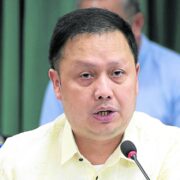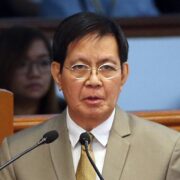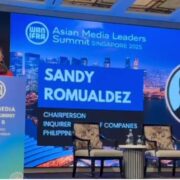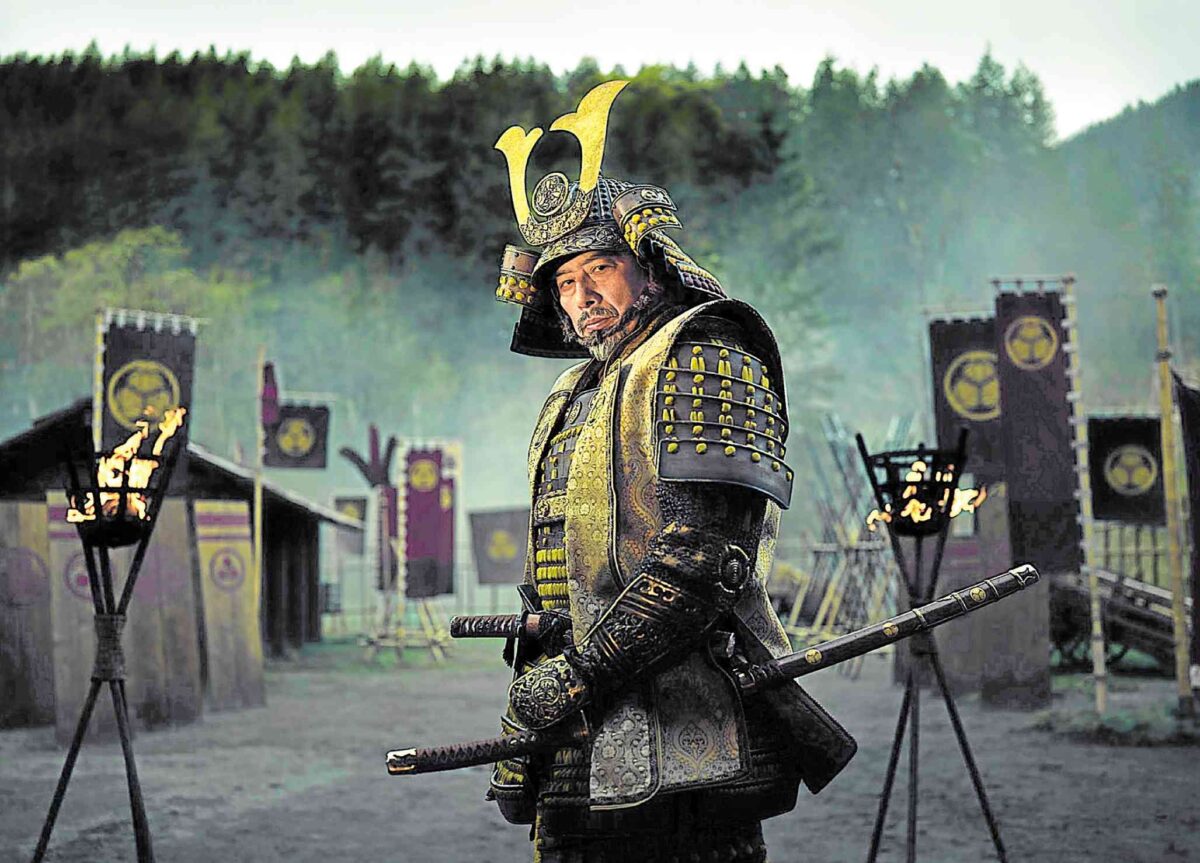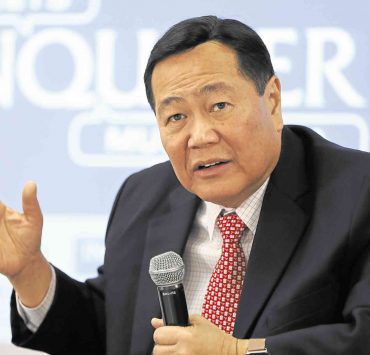Everyone involved in the stunning new adaptation of “Shogun,” James Clavell’s 1,152-page 1975 novel, acknowledges the enormity of the artistic undertaking.
After all, while its story is a work of fiction, it is nevertheless inspired by real people and actual events that took place in the 1600s, at the tail-end of Japan’s civil war-driven Sengoku period, when the feudal system was reestablished under the Tokugawa Shogunate.
In FX’s 10-part series, which launches on Disney+ tomorrow, a shrewd daimyo, Lord Yoshii Toranaga (Hiroyuki Sanada of “The Twilight Samurai,” “Ring,” “Lost,” “Westworld”), fights for survival as his enemies in the Council of Regents unite against him.
But Toranaga’s luck takes an auspicious turn when a mysterious European ship is found marooned in a nearby fishing village. With it comes English sailor John Blackthorne, who bears secrets that would eventually help Toranaga tip the balance of power in feudal Japan.
Blackthorne has enemies of his own, however, namely the Jesuit priests and the Portuguese merchants. It doesn’t take long before Toranaga and Blackthorne’s fates become inextricably tied to their translator, Lady Mariko (Anna Sawai, who plays Cate Randa in “Monarch: Legacy of Monsters”), a mysterious Christian noblewoman and the last of a disgraced clan.
While serving her lord in the midst of this fraught political landscape, Mariko must reconcile her newfound companionship with Blackthorne, her commitment to the faith that saved her, and her honor-bound duty to her late father.
Blackthorne is loosely based on English navigator William Adams, who rose to become a samurai under Tokugawa Ieyasu, founder of the Tokugawa Shogunate on whom Toranaga’s character is based.
Peaceful world
In the press con that we attended last Tuesday, lead star and executive producer Hiroyuki said that taking on the challenge was a colossal task that he was more than thrilled to embrace.
He explained, “I chose to play Toranaga because I wanted the rest of the world to know the great achievement of Ieyasu Tokugawa, the real person Toranaga is based on. He is exactly the type of hero that our world needs right now.
“Given the current situation we’re facing, it seems like we haven’t changed at all—there are lots of wars and struggles everywhere. But under his watch, Tokugawa halted all the battles and ruled over a very peaceful world for many hundreds of years.
“We need someone like that these days. And that is why I wanted this role—that was really the driving force behind me wanting to portray Toranaga. So, after watching the series, I do hope that people receive something important that they can use in their day-to-day lives and think what the show is truly about.”
Hiroyuki said that while the production team, which includes showrunner, creator and writer Justin Marks, cocreator and writer Rachel Kondo, and executive producer Michaela Clavell (the novelist’s daughter), doesn’t have a secret weapon, he said that great teamwork was crucial to the success of their gargantuan undertaking.
Omnipotent presence
“To pull off this East-meets-West dream project, teamwork was our most important weapon,” he pointed out. “For this samurai drama, we had specialists, consultants and advisors in every department. On set, we checked every single shot and detail to make everything look authentic—like, how to wear the kimono properly, even for the extras.
“The making of ‘Shogun’ is a great model for the whole world to see. [It proves that] if people work together no matter how hard and difficult the situation is, we can make miracles. And that is a great message for everybody.”
The action-packed series, which is as brutal as it is dazzling to behold, relied so much on Hiroyuki’s leadership that even Cosmo Jarvis (“Persuasion,” “Lady Macbeth”) was grateful for the 63-year-old Japanese actor’s reassuring guidance.
“I asked [Hiroyuki] many things throughout the process,” the 34-year-old British actor-musician disclosed. “He was a very omnipotent presence on set and was always around guiding particularly the more junior actors and creating a good environment for everyone to work in. I would frequently confer with him about things that Blackthorne should have been learning and if he was doing them correctly.”
Asian representation
For Anna, the project helps fulfill a need for her, not just as an actress, but also as an Asian woman who wants to see herself accurately represented in foreign and mainstream media.
“I grew up watching a lot of Western media,” the eloquent 31-year-old actress intimated. “There’s so much more representation now, which is amazing. People like Hiro really paved the way for us, so I’m grateful for that. However, I felt that Asian women—and Japanese women in particular—have been boxed into playing the sexy girl or the submissive lady or the one who has do action scenes, but I wanted to see more depth.
“I wanted to see myself in these characters, but it’s always been a bit hard because [the characters onscreen] didn’t really feel like me. But Mariko really shows the inner struggles of Japanese women. She possesses a different kind of strength that has never been shown in Western media. So, playing a figure like her—who truly reflects us—meant so much to me.”
New understanding
Asked to discuss what it was like bringing the 1975 book into the future for a new generation of viewers and readers to appreciate, Justin acknowledged the immense responsibility involved in creating a new adaptation for “Shogun.”
“Coming into this project, Rachel and I were very aware of the legacy of the book and its previous adaptation, its impact on American culture, its impact on world culture in 1975 when it came out,” he said. “Speaking as an American, it really took great strides to bring Japan to American awareness at the time. Sushi wasn’t commonly on every street corner in the United States in those days.
“We knew that if we were going to do it again, we would not have that novelty working in our favor anymore. We would have to come to some new understanding of why it was important to tell this story today.
East meets West
“What jumped out at us—and really escalated with the collaboration with Hiroyuki—was this idea that if we were going to do a story about East meets West, we needed to do a production that was truly East meets West. We needed to find a ‘new language.’
“Our original conversations were all about what mistakes Hollywood has made in our cultural past over the last several decades when trying to represent Japan and how we can avoid them. And those discussions became very exciting for us, to come up with that ‘new language’—a language of common respect and a way of trying to surprise audiences with what Hollywood and Japan can do together.”
Chiming in, Rachel said, “We all live in the after-effects of the book. It was groundbreaking in that the book came out and the landscape for us in the West was changed. And so, it became quite a responsibility for us as writers to approach this iconic tome of a book.
“What we ended up asking was, how could we update it for today. And we ended up discovering that all the questions we wanted to ask were first asked by James Clavell himself—it was those questions that we had to bring into today’s conversation.
“Finding the braid of the three characters within the book was always what we had to stick to when it came to curating … because you can’t include everything that’s in a 1,200-page book and condense them into a 10-hour miniseries.”
Invisible things
For Michaela, the task was a real challenge to hurdle.
“To pick up on what Rachel was saying, the novel is a big book. It is complex and has many layers. So what the challenge entailed was, ‘What do you pick out and which do you leave behind? And which threads of the story do you elaborate on?’
“In doing that, the task was to get the book’s important elements, and that sometimes is subtext in a book, which you have to make sure should come alive in a television series or film. Sometimes, it’s the invisible things in a book that capture your imagination or provoke your thoughts about life and death with honor—which were large themes in the book.
“How do you live or die well? It’s a complex decision that evolves even in real time. I think each member of the cast brought special moments to scenes that perhaps were not in the original script, and when you talk about them, they give birth to even more ideas.
“It’s a perpetually evolving process, but Hiro, Cosmo and Anna carried it off like it was effortless. And that was a real honor to watch!”




